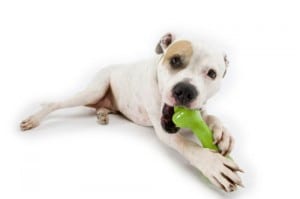 Dogs and humans are so different, and even though we want our dogs to be happy, there are some common mistakes that are stressful for dogs. Small changes can have a big impact on the dog’s well being, and in the long run make the whole family happier.
Dogs and humans are so different, and even though we want our dogs to be happy, there are some common mistakes that are stressful for dogs. Small changes can have a big impact on the dog’s well being, and in the long run make the whole family happier.
1. Dogs need exercise
Most people have crammed schedules and it can be hard to find the time and energy to exercise the dog. It’s wise to choose a dog breed with energy needs that fit your lifestyle, but even breeds that are mostly inactive and content with being indoors need some exercise.
Letting the dog into the yard isn’t enough. Take your furry friend for a daily walk, or play ball together. There are many ways to make sure your dog gets sufficient exercise, and you can have fun while doing it together.
2. Don’t take your dog’s food bowl away while their eating
Many people think they need to take the dog’s food away in the middle of each meal, or take the toy the dog is playing with. If your dog is properly raised and socialized he will share food and toys with you if needed, and you don’t have to keep taking it away to prove the point. Your dog won’t understand why you keep taking it, and there’s a big risk he will end up stressed, anxious, and even aggressive from knowing the food will disappear.
3. Crates are not meant for punishment
A crate can be a great training tool and your dog’s sanctuary. It needs to be a safe place where your dog can rest and feel secure. Many owners use the crate for time-outs when the dog has done something wrong, but dogs don’t understand that. Using the crate for punishment won’t solve the problem with whatever the dog did wrong, and it can ruin the dog’s safe place.
4. Teach your dog what’s right instead of yelling
It’s human to raise one’s voice when someone doesn’t listen, but it doesn’t work on dogs. If your dog doesn’t have basic training, he won’t understand to come to you because you shout louder. Watch yourself during a day – if you yell a lot at your dog, you might need to take him to doggie school, or at least look over your methods of training. Make a point of rewarding the right behavior instead of scolding the wrong.
5. Is your dog alone too much?
Dogs are social, and many dog owners work more than eight hours a day or travel a lot. If you have a dog it’s important to fit in time for exercise and play. If you can’t do it yourself, consider finding a dog walker or daycare. If your dog is alone to much they’ll be sad, stressed, and unhealthy.


 Cats are naturally clean and hate dirty, stinky litter boxes. If the box isn’t squeaky clean, your kitty might search for a substitute, and whether that’s a corner of the carpet or a basket of clean clothes, you don’t want it to happen.
Cats are naturally clean and hate dirty, stinky litter boxes. If the box isn’t squeaky clean, your kitty might search for a substitute, and whether that’s a corner of the carpet or a basket of clean clothes, you don’t want it to happen.
 Dog toys are important, but can get expensive. If your dog tires of toys quickly, here are some tips for getting the most out of the toys.
Dog toys are important, but can get expensive. If your dog tires of toys quickly, here are some tips for getting the most out of the toys. There is a plethora of dog toys available, and which to choose largely depends on the dog. Some dogs tear through everything but the most chew-resistant in minutes, and others carry the same soft squeaky duck around for years.
There is a plethora of dog toys available, and which to choose largely depends on the dog. Some dogs tear through everything but the most chew-resistant in minutes, and others carry the same soft squeaky duck around for years. When it comes to humans, many say that we never stop buying toys – they just become more expensive with age. Toys are important to us, and they’re important to pets as well. To dogs, they’re even necessary.
When it comes to humans, many say that we never stop buying toys – they just become more expensive with age. Toys are important to us, and they’re important to pets as well. To dogs, they’re even necessary.